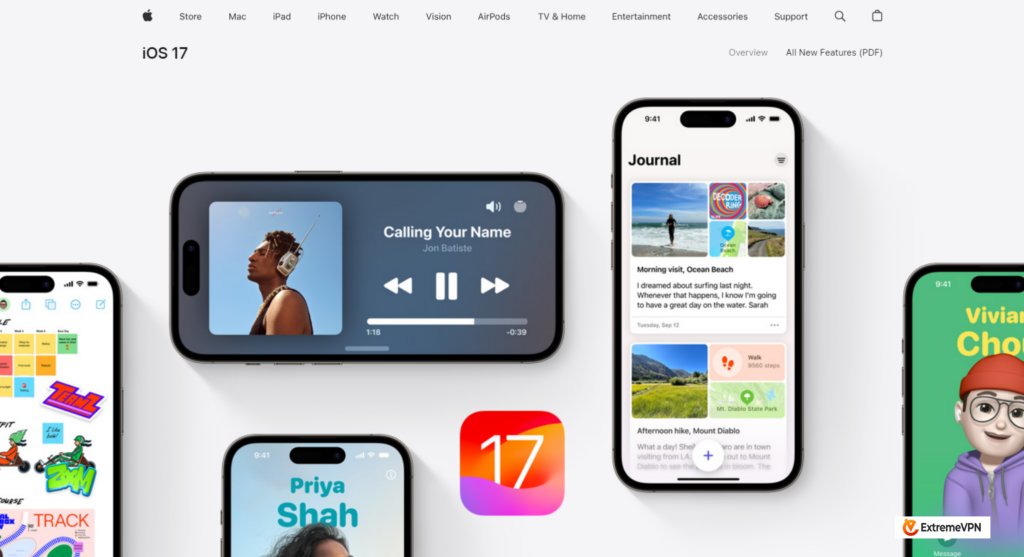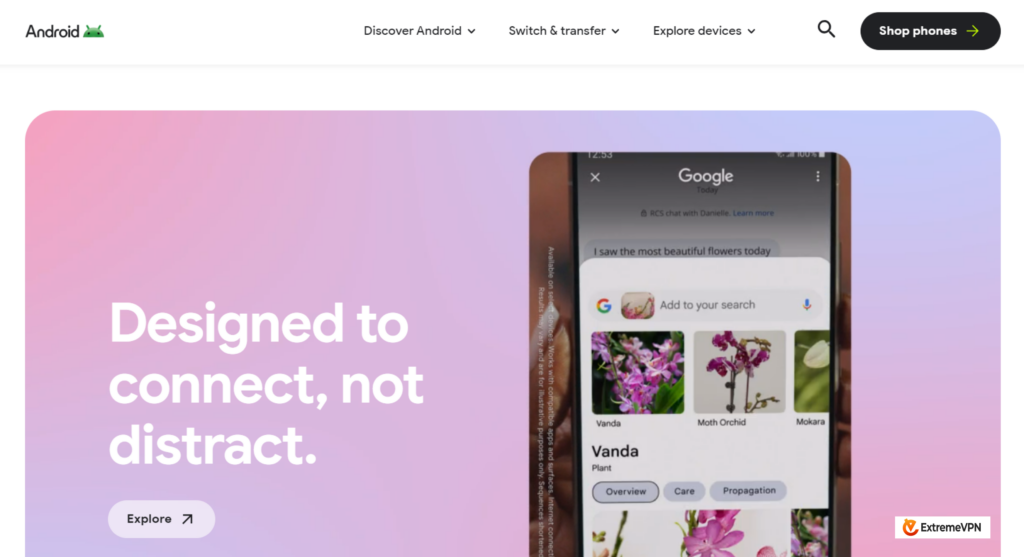Whether you or someone close to you might have been a victim of a spam call. It happens when an unknown scammer tricks another person into performing an action or spilling private information via phone.
Despite the numerous measures taken, people lose huge amounts of money to these calls each year, and the number continues to rise. So, to avoid being a victim yourself, it’s important to know the nuances of “spam risk” calls.
This guide covers everything about spam calls. We’ll explain what they are, how and why they occur, and how you can avoid them to protect yourself and your loved ones.
What is Spam Risk?
A spam risk is an alert by a mobile carrier related to an incoming call from a number. It indicates that the number has recently displayed suspicious call behavior and warns the call receiver to be careful when answering such a call.
Although the term now refers to the entire call process, it originated from the notification that mobile carriers sent regarding the suspicious number.
The history of spam calls traces back to the early days of the telephone but grew in the 70s with the boon of the telemarketing industry. Today, businesses and individuals lose millions of dollars to “spam risk” calls, prompting the need for proper awareness and preventive measures.
Why Do Spam Risk Calls Show Up on Your Phone?
Spam risk calls appear on your phone because they are, in fact, just calls. Besides the warnings that accompany them, a spam risk is similar to a simple call from your friend or family. Your phone will receive any call from any number trying to call you.
That is, as long as you’ve not blacklisted them on the phone itself or blocked them via any third-party app that allows you to block phone numbers.
Your network provider may show a number as potential spam. However, it’ll never block it automatically. It’s up to you to decide whether to blacklist a number that your network carrier has warned you about. If you do that, no call from that number will reappear on your phone again.
How Your Mobile Carrier Can Detect a Spam Call
Mobile carriers have a genius way of detecting “spam risk” calls due to their financial and psychological impact. Between 2020 and 2021, Americans lost over $29.8 billion to phone scams, indicating the dire need for effective scam call detection and notification.
Mobile carriers typically use machine learning to determine whether a call poses a spam risk. They set up an automated algorithm that analyses an incoming call and runs the associated phone number against a database for suspicious activity.

The design of the algorithm generally involves checking the number of people who have received calls from that number, the frequency of the call in a given time, and other suspicious activities related to behavioral analytics.
For example, the algorithm’s design may also include checking the duration of calls and even the origin of the number itself.
After verification, your network then brands that number as spam by adding a “Spam Risk,” “Spam Likely,” or “Scam Risk” label to it. At this point, your network provider believes that they’ve done enough, and it’s now up to you to decide whether to accept or reject the call.
What Happens if You Answer a Spam Risk Call?
Typically, two scenarios can happen in this situation. The first is that you’re familiar with the person on the other end of the line, and your mobile carrier has mistakenly labelled them as spam. (We’ll discuss this better in the next section of this article).

The second scenario, which generally comes to mind, is that the caller is a scammer who wishes to dupe or cheat you. If this is the case, your personal and private data might be seriously endangered. It’s often difficult to directly pinpoint this scammer’s motive with you. However, you might lose some of your possessions, properties, or wealth or become a victim of identity theft.
Yearly, Americans lose millions of dollars to scam calls and spam theft, so you must be very careful. Spam callers may also try to obtain certain information from you, which enables them to access something or someone close to you, like your computer or your friend.
Can the Spam Risk Label be Wrong?
Spam callers typically get your number via various means. They can look it up in a public telephone directory, steal it from your phone carrier, or monitor your online activities.

Social media apps like Facebook and Instagram are now so popular that it’s easy to introduce challenges that ask people to submit their mobile numbers, which they will. Scammers often use this and other social engineering tantrums to get people to reveal private or personal information.

Since your mobile carrier is unaware of where the other person got your number, it may erroneously tag it with the “Spam Risk” label. You can find this out if you answer the call and notice that it’s a relative or a long-contacted friend.
This means that it’s advisable first to confirm a number with a spam risk label rather than base your decision only on your mobile carrier’s judgment. A quick check of your phone’s contacts list should give you the answer you need.
If you answer the call and notice that the other person isn’t who they claim to be, it’s often better to hang up the call and add the number to your list of blocked phone numbers.
Do You Keep Receiving Spam Risk Calls? Here’s What to Do
Despite their prevalence, spam calls are not evenly distributed among mobile and network subscribers. Spam callers and hackers target some people more than others. If you notice that you often receive these calls and are unsure what to do, then the guide below will help you.
Here’s what you can do if you continually receive spam risk calls:
1. Ignore the Call
For most problems, the easiest solution is usually the most obvious one. If you receive a call from an unknown number carrying the infamous “Spam Risk” label, your first action should be to ignore it.
Avoid calling the number back so you don’t purposely set yourself up. Some “spam risk” calls originate from other countries, and you may even be racking up fees by calling back.
2. Block the Number
Virtually every mobile carrier and even smartphone has some way of blocking phone numbers. If an unknown number continues to call you incessantly, it may be time to add it to your blacklist.
3. Report to the Appropriate Authorities
If you have genuine reasons to believe that a spam caller is a scammer, then you may need to do more than just block them. It may be necessary to report them to the appropriate authority. This helps law enforcement to apprehend the person and prevents other unsuspecting victims from falling into their hands.
In the US, the agency in charge of consumer fraud-related cases is the Federal Trade Commission (FTC). You can report any fraud that might have occurred to the official channel at ReportFraud.ftc.gov.
4. Don’t Spill Your Personal Details
Be cautious with the words you utter when speaking with strangers on the phone. Scammers are looking for ways to dupe you and listen keenly to every word you say. By doing so, they can find information that can aid them in performing their malicious activities. Be sure not to disclose personal and, even more importantly, financial information.
5. Don’t be Pressured into Taking Any Actions
Criminals can be highly persuasive when discussing with you on the phone, employing different tactics to make you yield. Some use aggression to coax you into doing what they want, while others may try to get your sympathy.
Regardless of their trick, ensure you don’t get pressured into taking any of their desired actions. If you’re finding it difficult to stand your ground, consider ending the call.
6. Don’t Rely on Caller IDs and Similar Apps
Due to the increase in scam calls over the years, caller IDs have become popular. These apps typically run any number that calls you through numerous databases to trace the name and location of the person.
Some of these apps also have a blocking feature that works automatically upon detecting a spam call.
However, they can be bypassed. Scammers can trick these apps into showing the name and location that they want rather than what and where they actually are.
7. Password Your Voicemail
After you have implemented strict security measures on phone calls, the only way to stop spam callers from reaching you is via voicemail. By adding a password to your voicemail, you can better protect your data and prevent it from falling into the wrong hands.
How to Stop Spam Risk Calls on iPhone

1. Silence Unknown Callers from Settings
If your iPhone runs iOS 13 and later, then you can stop spam calls by silencing unknown callers. They are called unknown callers because you have not saved them on your phone, and it doesn’t recognize them or can’t link them to any contact.
This means that even if the number belongs to an individual whom you contact daily, as long as you haven’t saved it to your device, then it’s an unknown contact.
Here are the steps you can follow to silence unknown callers:
- Go to your device’s settings.
- Scroll down and tap “Phone.”
- Click “Silence Unknown Callers” and tap the toggle to turn it on.
With this feature enabled, iPhone will silence calls from unknown caller, send them to voicemail, or display them in the “Recents” list in your call log.
However, incoming calls from people in your contacts list will continue to ring, likewise recent outgoing calls, and Siri suggestions.

2. Block the Caller Manually
Another way is to check and block all risk-labeled numbers. Here’s how to do it:
- Run the phone application.
- Click Recents and press the info button (with the i symbol) in front of the person or number you want to block.
- Scroll down and click “Block this Caller.”
How to Stop Spam Risk Calls on Android

1. Filter Spam Calls Directly from Your Phone Dialer
Google Phone is the default dialer app that Google provides for smartphones that run the Android operating system. Here’s how you can filter spam calls from your dialer:
- Download the Google Phone app to your device from the Google Play Store.
- Open the app, click the three dots at the upper right corner, and tap “Settings.”
- Find and open “Caller ID & Spam” in the Assistive section.
- Toggle “Filter spam calls” on and watch your device automatically prevent spam calls from disturbing you.
2. Block Spam Calls Manually from Your Call Log
Here are steps to block numbers manually from your call log if you suspect that they’re potential spam.
- Tap the Phone app to open.
- Find the number you intend to block and long press on it.
- Tap “Block” in the list of options that show up.
How Can Spam Risk Calls be Stopped on Landlines?
Scam calls are not exclusive to smartphones alone. They extend to any telephony device or channel that allows two people at different locations to connect. That means, even in the office, where landlines are common, you need to keep yourself safe from the menace of spam callers.
Below are some useful tips for stopping unwanted calls on a landline:
1. Block Unknown Numbers Manually
Most landlines have built-in functionalities that allow you to add numbers to a list of blocked contacts manually. Keep a record of all the unwanted numbers that have called you, navigate to where you can block numbers on your landline, and add these numbers individually.
Typically, these devices have limits on the amount of numbers that you can add, which means you may need to update the list from time to time. If you’re struggling with adding numbers or can’t find the “Blocked numbers” setting, then consult your landline’s manual, manufacturer’s website, or customer care.
2. Register with the National Do Not Call Registry
You can also submit your number to the National Do Not Call Registry. This prevents you from receiving telemarketing calls from corporations and individuals. To add your number to this registry, you have to visit donotcall.gov or call 1-888-382-1222.
Certain organizations can still call such you, such as charities, political groups, debt collectors, and surveys. Some companies and individuals can also ignore Do Not Call. If you receive a call after 31 days of adding your number to the Do Not Call registry, consider reporting it to the FTC.
3. Acquire a Call-blocking Device from the Onset
You can also acquire a landline where some of the most popular spam callers are already blocked. This saves you the stress of having to start blocking manually. However, scammers also frequently update their numbers, which is one of the limitations of this type of device.
4. Get a Modern, Technology-enabled Landline
Some landline service providers have started implementing call labeling and filtering technology. This technology works similarly to email spam filters, labeling calls as potential spam or even blocking them outright based on certain criteria.
Some landlines also allow you to silence all unknown callers, greatly minimizing the chances of a spam call.
Conclusion
If you use any form of telephone device for communication, it’s important to prioritize your safety and security. You need to safeguard your personal data from spam callers who use different tricks to rob you of your money or gain unauthorized access. This article explores “spam risk” calls in detail and highlights some proven ways to avoid them.
No matter what activities you perform on the web, it’s always a good idea to secure yourself using a premium VPN service like ExtremeVPN. Our fast servers ensure that no snoopers or cybercriminals breach into your personal space.
Have you ever had a spam risk experience recently? Consider sharing your experience with us below.
